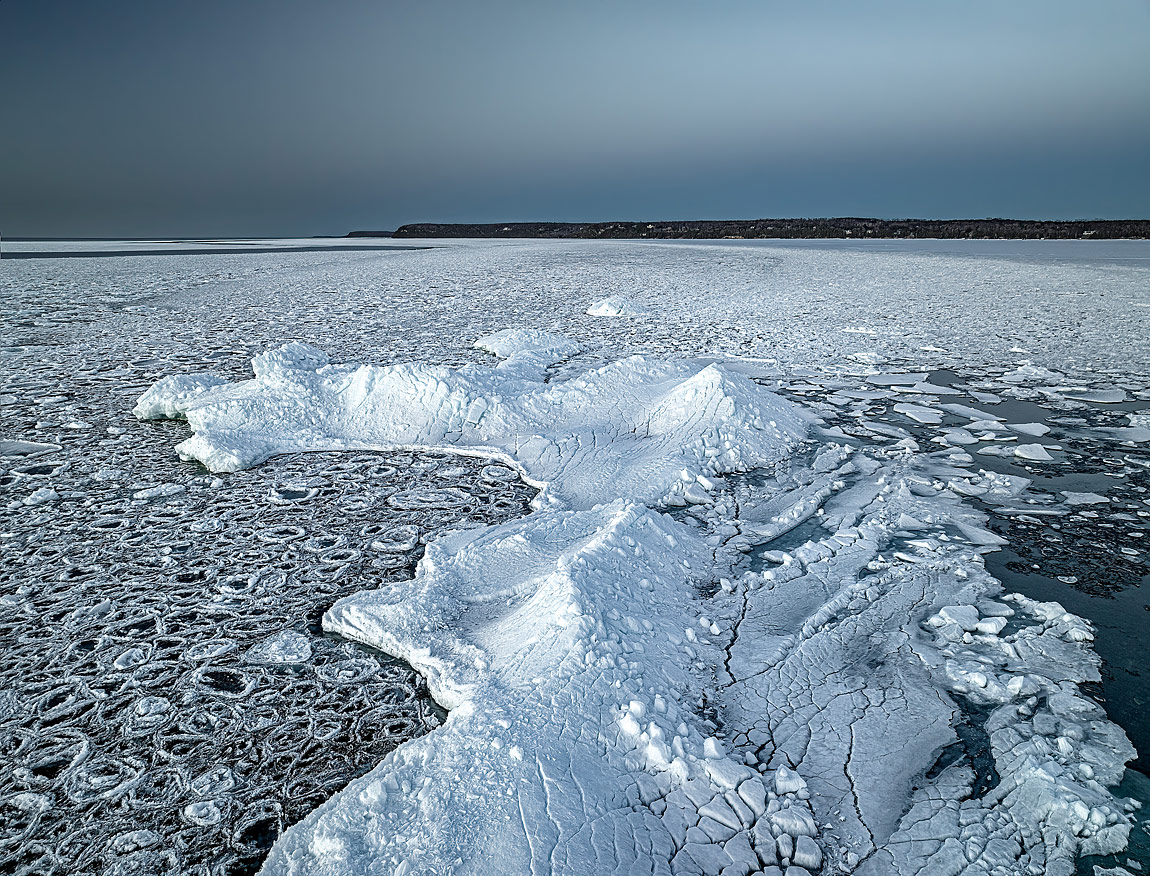I am fortunate to live in Wisconsin at the tip of an 80 mile long peninsula that extends out into Lake Michigan. There are wonderful photographic opportunities in every season but my favorite time is winter when ice creates magic in many forms but ice shoves are what I always anticipate the most. They occur almost every winter but rarely in the same place. In the late winter, usually late February to early April, the bay ice sheet begins to break up.
The conditions needed for ice shove formation are a strong wind which breaks up the ice and sets it in motion. The mass and momentum of the ice is tremendous and when the front of the moving ice is stopped by the shore or a shallow reef, the ice behind keeps moving and it begins to pile up into a shove. They form in a matter of just a few hours and may end up being just a few feet high or up to 40 feet high of very unstable ice. To me they are highly photogenic but just until the next snowstorm covers them so the window to photograph them might be very short.
2022 had not been a great winter for photographing ice until this extensive ice shove formed on a reef next to the Little Sister Islands. It was over a mile from shore and surrounded by broken ice and some open water so it was available to explore only from the air. This one lasted about 10 days from when I first saw it and I explored it with my drone every late afternoon until dark whenever the weather and wind were favorable.
I ended up with many images I liked from my trips out to the shoves and this evening was my last visit out there. It was getting dark and clouds from an approaching snowstorm were rolling in but when I turned towards home I saw this and even though my battery was getting quite low, I took a couple minutes to refine the composition and made this final photo of these massive shoves.


